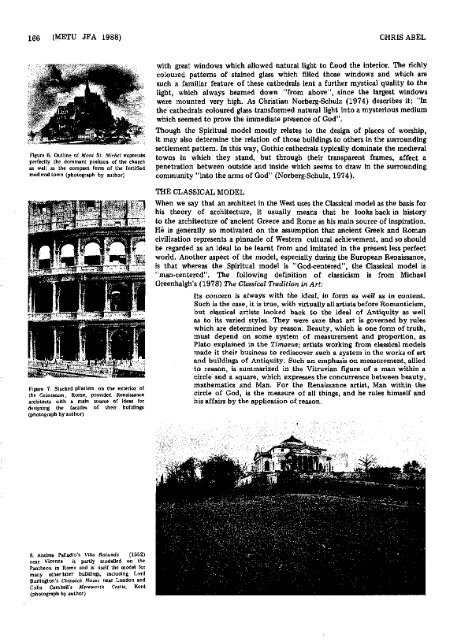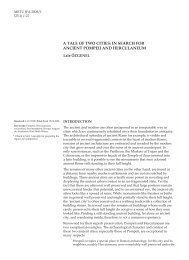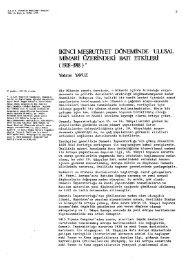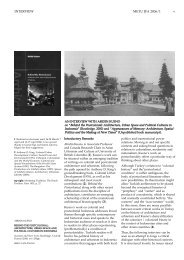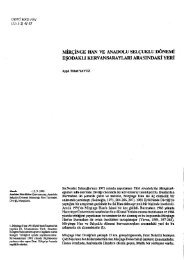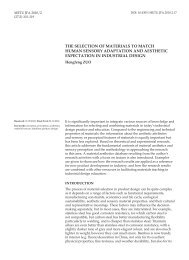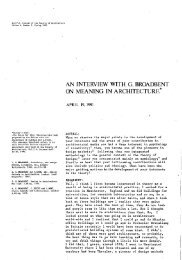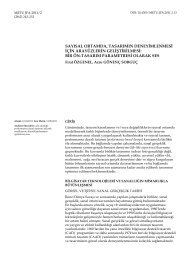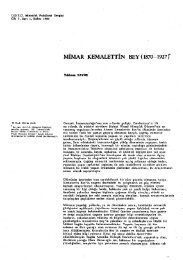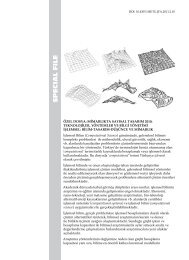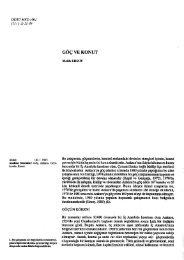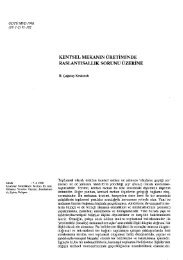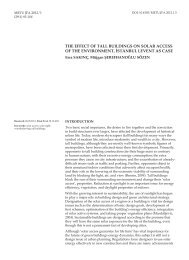ANALOGICAL MODELS IN ARCHITECTURE AND URBAN DESIGN l
ANALOGICAL MODELS IN ARCHITECTURE AND URBAN DESIGN l
ANALOGICAL MODELS IN ARCHITECTURE AND URBAN DESIGN l
Create successful ePaper yourself
Turn your PDF publications into a flip-book with our unique Google optimized e-Paper software.
166 (METU JFA 1988) CHRIS ABEL<br />
Figure 6. Outline of Mont St. Michel expresses<br />
perfectly the dominant position of the church<br />
as well as the compact form of the fortified<br />
medieval town (photograph by author)<br />
Figure 7. Stacked pilasters on the exterior of<br />
the Colosseum, Rome, provided Renaissance<br />
architects with a main source of ideas for<br />
designing the facades of their buildings<br />
(photograph by author)<br />
8. Andrea Palladio's Villa Rotunda (1552)<br />
near Vicenza is partly modelled on the<br />
Pantheon in Rome and is itself the model for<br />
many other later buildings, including Lord<br />
Burlington's Chiswick House near London and<br />
Colin Cam bell's Mereworth Castle, Kent<br />
(photograph by author)<br />
with great windows which allowed natural light to flood the interior. The richly<br />
coloured patterns of stained glass which filled those windows and which are<br />
such a familiar feature of these cathedrals lent a further mystical quality to the<br />
light, which always beamed down "from above", since the largest windows<br />
were mounted very high. As Christian Norberg-Schulz (1974) describes it: "In<br />
the cathedrals coloured glass transformed natural light into a mysterious medium<br />
which seemed to prove the immediate presence of God".<br />
Though the Spiritual model mostly relates to the design of places of worship,<br />
it may also determine the relation of those buildings to others in the surrounding<br />
settlement pattern. In this way, Gothic cathedrals typically dominate the medieval<br />
towns in which they stand, but through their transparent frames, affect a<br />
penetration between outside and inside which seems to draw in the surrounding<br />
community "into the arms of God" (Norberg-Schulz, 1974).<br />
THE CLASSICAL MODEL<br />
When we say that an architect in the West uses the Classical model as the basis for<br />
his theory of architecture, it usually means that he looks back in history<br />
to the architecture of ancient Greece and Rome as his main source of inspiration.<br />
He is generally so motivated on the assumption that ancient Greek and Roman<br />
civilization represents a pinnacle of Western cultural achievement, and so should<br />
be regarded as an ideal to be learnt from and imitated in the present less perfect<br />
world. Another aspect of the model, especially during the European Renaissance,<br />
is that whereas the Spiritual model is "God-centered", the Classical model is<br />
"man-centered". The following definition of classicism is from Michael<br />
Greenhalgh's (1978) The Classical Tradition in Art:<br />
Its concern is always with the ideal, in form as well as in content.<br />
Such is the case, it is true, with virtually all artists before Romanticism,<br />
but classical artists looked back to the ideal of Antiquity as well<br />
as to its varied styles. They were sure that art is governed by rules<br />
which are determined by reason. Beauty, which is one form of truth,<br />
must depend on some system of measurement and proportion, as<br />
Plato explained in the Timaeus; artists working from classical models<br />
made it their business to rediscover such a system in the works of art<br />
and buildings of Antiquity. Such an emphasis on measurement, allied<br />
to reason, is summarized in the Vitruvian figure of a man within a<br />
circle and a square, which expresses the concurrence between beauty,<br />
mathematics and Man. For the Renaissance artist, Man within the<br />
circle of God, is the measure of all things, and he rules himself and<br />
his affairs by the application of reason.


